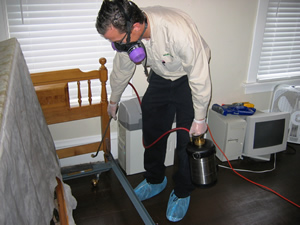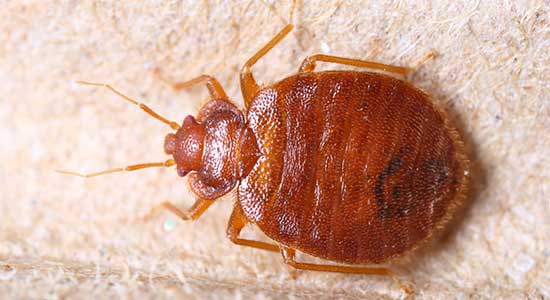Affordable Bed Bug Heat Treatment for Quick and Effective Results
Affordable Bed Bug Heat Treatment for Quick and Effective Results
Blog Article
Obtain Educated About the Sorts Of Parasite Control Approaches and Their Benefits for House Owners
Understanding the numerous parasite control methods readily available to house owners is necessary for reliable insect management. Homeowners that are educated can make strategic options that not only address insect concerns yet also boost the total high quality of their living atmosphere.
Chemical Insect Control Methods
Chemical pest control methods are an essential part of integrated bug management techniques for house owners seeking reliable remedies to pest infestations. These techniques include the application of chemical compounds designed to get rid of or prevent insects that intimidate personal effects, wellness, and comfort. Typical chemicals utilized include insecticides, herbicides, fungicides, and rodenticides, each tailored to target specific parasites.
The primary benefit of chemical bug control is its fast efficiency; lots of formulas supply prompt results, decreasing pest populations significantly in a brief time. Furthermore, advancements in chemical formulations have resulted in products that are more ecologically friendly and have lower poisoning levels for non-target microorganisms when applied appropriately.

Biological Bug Control Strategies
All-natural parasite control methods have actually gained prominence as homeowners seek safer and extra sustainable options to typical chemical strategies. Biological parasite control strategies use natural killers, parasites, or pathogens to take care of bug populaces properly. This approach is not only eco-friendly but additionally reduces the risk of harm to non-target types, consisting of valuable pests and wild animals.
One of one of the most common organic control techniques involves presenting natural predators right into the environment. For instance, ladybugs can be used to control aphid populations, while nematodes target soil-dwelling parasites like grubs. In addition, parasitoids-- organisms that live on or within a host-- can be utilized to control specific bug species by laying eggs inside them, ultimately causing their demise.
One more technique is using biopesticides, which are stemmed from all-natural materials such as germs, plants, or minerals (bed bug exterminator). These products can properly target bugs while posturing marginal danger to humans and animals. Generally, organic insect control methods provide property owners with an effective ways of pest monitoring that straightens with ecological principles, promoting a much healthier living setting while minimizing reliance on synthetic chemicals
Mechanical Insect Control Techniques
Mechanical bug control strategies encompass a selection of methods that literally stop or remove bugs without using chemicals. These techniques are especially advantageous for home owners seeking ecologically pleasant alternatives while making certain the safety of their space.
One typical method is using obstacles, such as nets, catches, and screens, which protect against parasites from going into homes or specific locations. Installing home window displays can properly maintain bugs out, while making use of physical obstacles around yards can hinder bigger bugs like rabbits or deer. Additionally, mechanical traps made for rats can capture and get rid of these bugs without the demand for toxic compounds.
Another effective technique involves using vacuum cleaners and mops to get rid of pests directly from surface areas. Regular cleaning and maintenance can substantially decrease bug populaces by removing food sources and hiding areas. In addition, employing tools like ultrasonic bug repellents can deter different pests via acoustic wave that are undesirable to them but faint to humans.
Social Insect Control Practices
Social bug control techniques focus on changing the environment and administration techniques to produce conditions that are much less for pest problems. These techniques are essential in keeping a well balanced ecosystem and reducing the reliance on chemical treatments. By altering agricultural techniques, house owners can effectively prevent pests while promoting plant health.
One usual method consists of crop turning, which disrupts the life cycles of insects by altering the kinds of plants grown in a particular area (bed bug exterminator). This not only decreases pest populaces but additionally improves dirt health. Furthermore, intercropping-- growing varied plants in proximity-- can confuse pests and lower their ability to locate their preferred host plants
Water administration is another essential aspect of social techniques. Proper watering methods can protect against standing water, which acts as a reproduction ground for mosquitoes and other pests. Keeping cleanliness in and around the home, such as consistently getting rid of debris and food waste, can considerably lower pest tourist attraction.
Incorporating these cultural techniques into an extensive parasite management method allows property owners to create find more information an environment that normally discourages bugs, thereby boosting the efficiency of various other control methods while advertising lasting gardening and landscaping.

Integrated Pest Management Approaches
Integrated Insect Monitoring (IPM) stands for an alternative strategy that integrates different strategies to efficiently take care of bug populations while minimizing ecological effect. This methodology incorporates biological, social, physical, and chemical methods to accomplish lasting pest control. By analyzing pest populations and their all-natural enemies, IPM highlights monitoring and determining pests before executing control actions.
One of the core principles of IPM is using limits, which establish the level of parasite activity that necessitates intervention. This ensures that treatments are used just when necessary, minimizing the dependence on chemical pesticides. Organic control techniques, such as presenting all-natural killers or bloodsuckers, operate in conjunction with cultural methods like crop rotation and habitat manipulation to interfere with pest life cycles.
Furthermore, IPM motivates making use of least-toxic chemical choices when treatment is needed, prioritizing products that present very little danger to non-target organisms and the atmosphere. For home owners, taking on IPM comes close to not only improves the efficacy of parasite monitoring yet also promotes a much healthier living setting, promoting biodiversity and decreasing chemical direct exposure. Inevitably, IPM empowers homeowners to make educated decisions that stabilize bug control with ecological duty.
Final Thought
In verdict, comprehending the various pest control approaches equips homeowners to make educated decisions concerning pest management. Each technique-- chemical, biological, mechanical, social, and incorporated parasite management-- offers distinct benefits that provide to various demands and preferences.
Comprehending the different insect control techniques readily available to property owners is crucial for effective insect administration.Chemical parasite control approaches are an essential component of incorporated bug administration approaches for house owners looking for effective solutions to pest invasions. In general, biological parasite control methods best indoor termite treatment supply home owners with an effective ways of bug monitoring that lines up with environmental concepts, advertising a that site healthier living atmosphere while lowering dependence on artificial chemicals.
Cultural parasite control practices concentrate on customizing the setting and monitoring methods to produce conditions that are much less conducive to pest infestations.In final thought, recognizing the numerous parasite control methods encourages homeowners to make educated decisions relating to pest monitoring.
Report this page